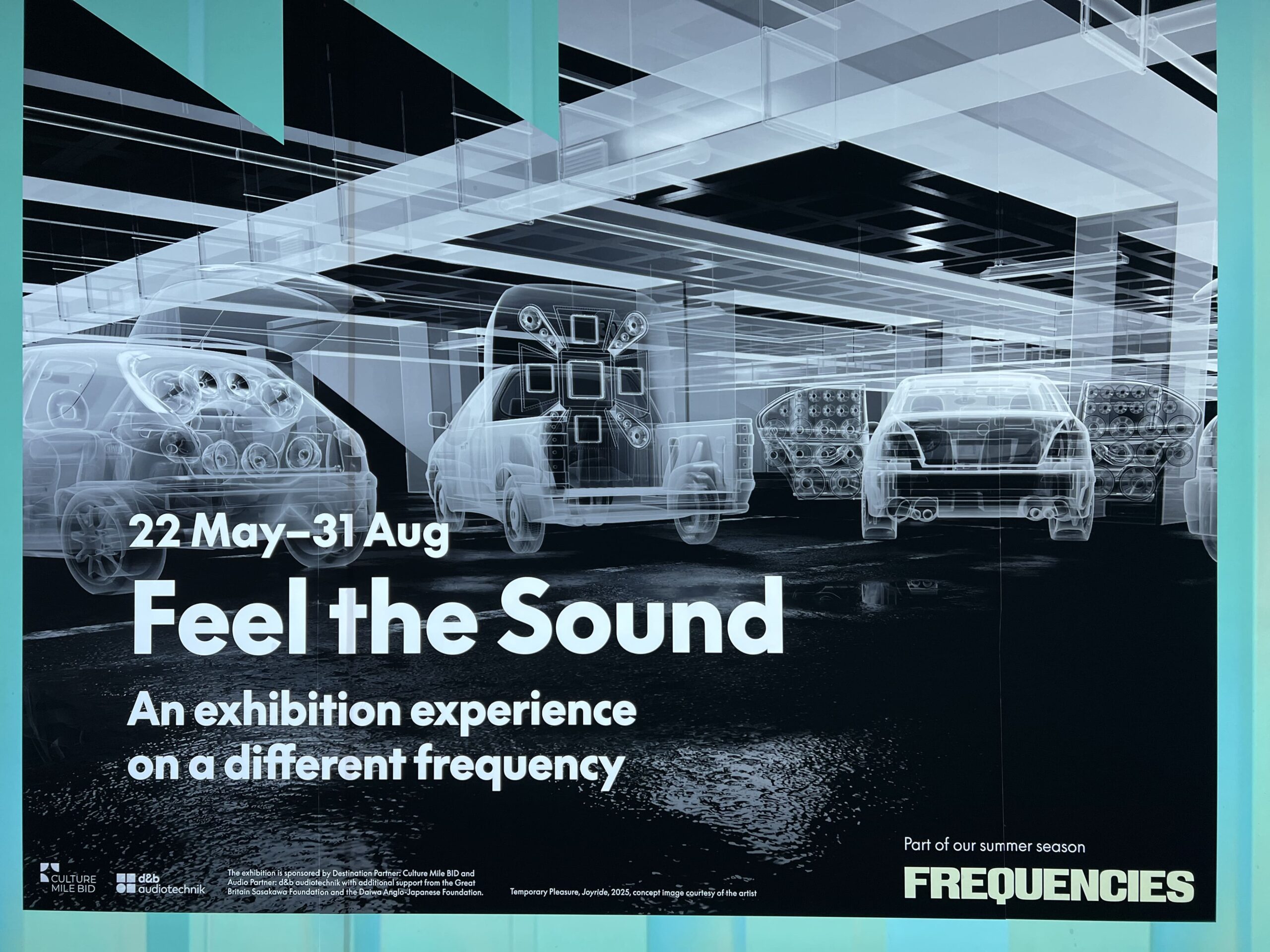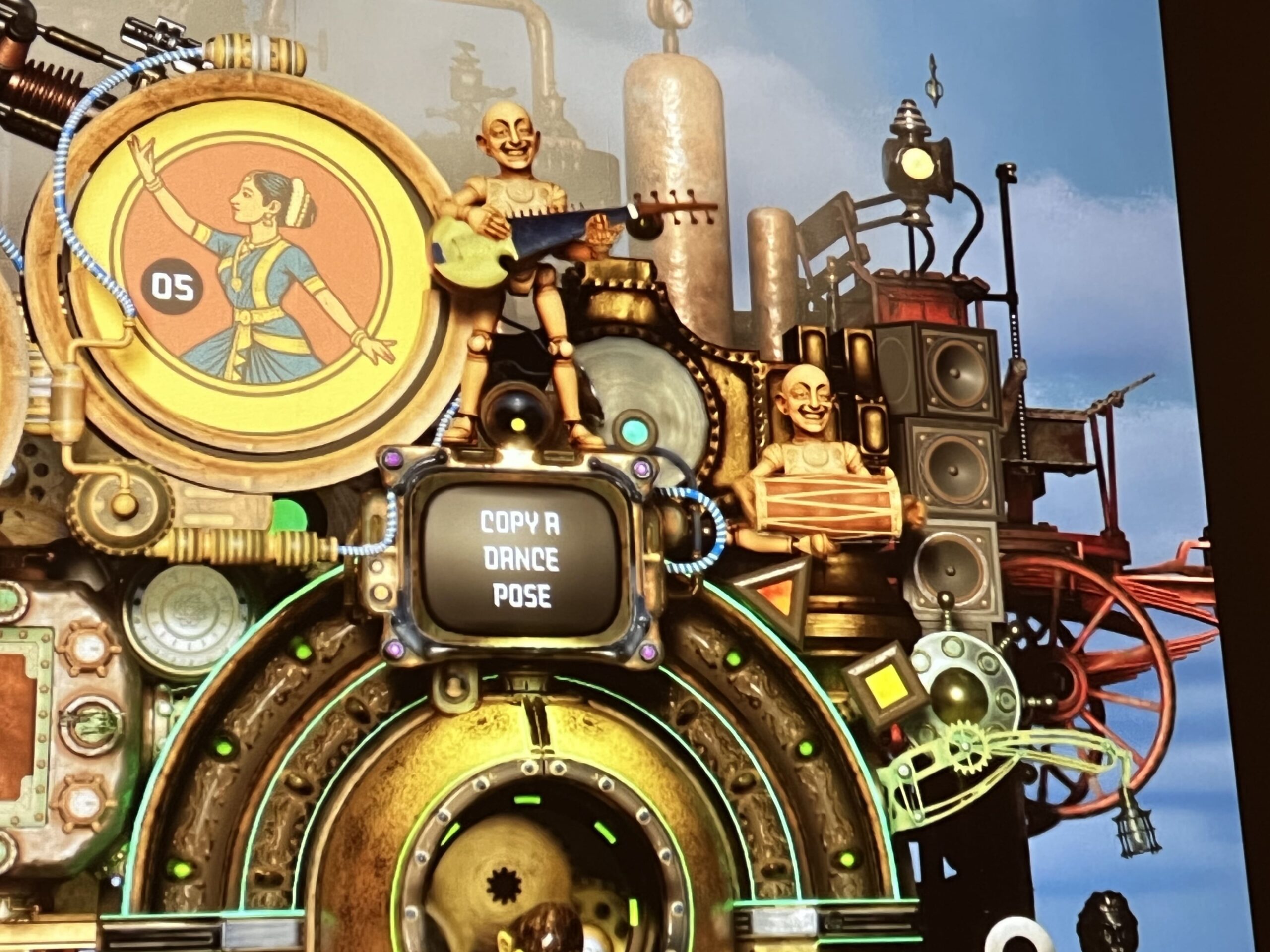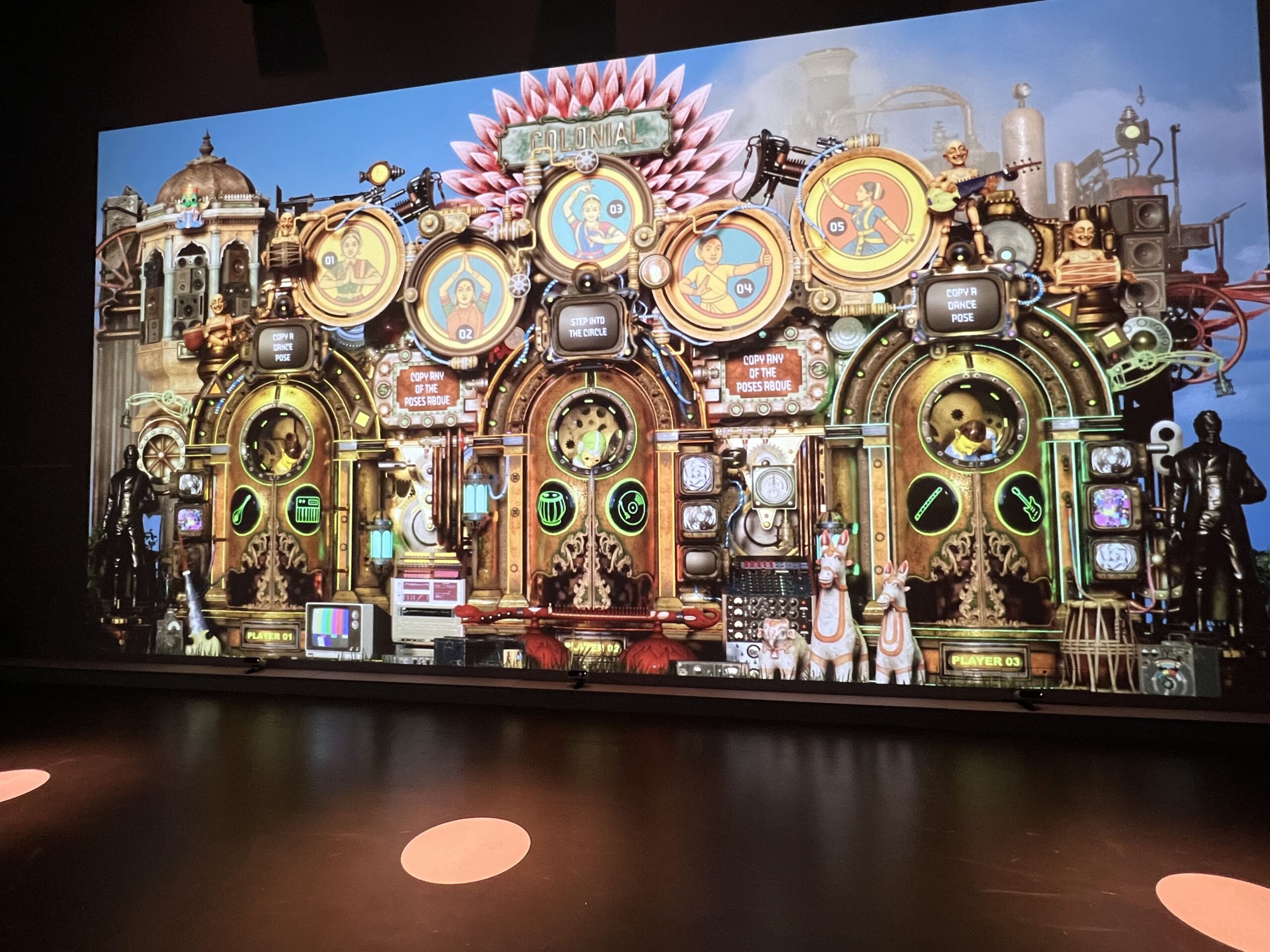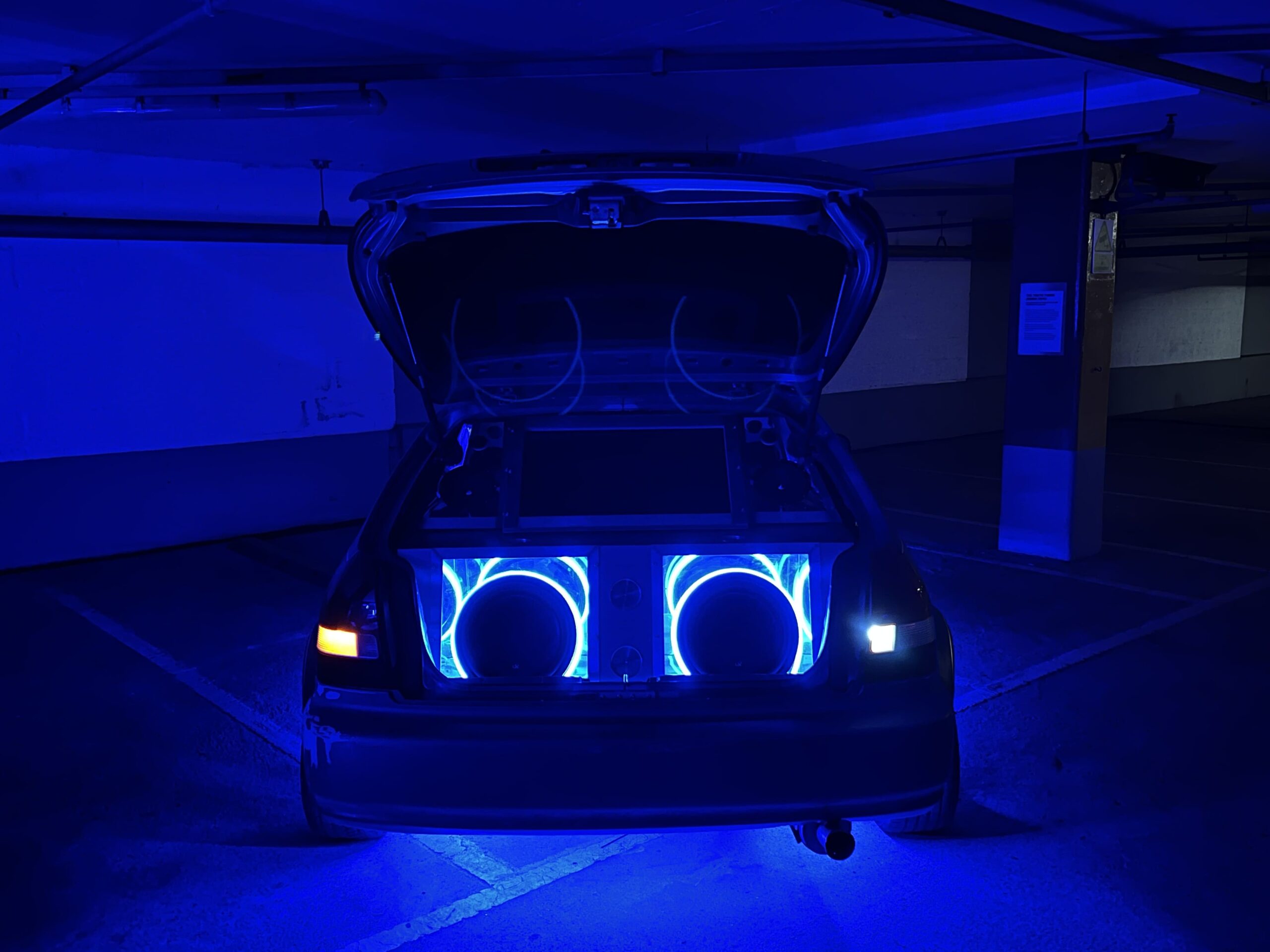‘Feel The Sound’ Exhibition Review
Sonics, long neglected as a sensory realm, has gained increasing attention over the past few decades — both in academia, with the rise of sound studies, and in the arts world. This renewed interest has opened up new ways of thinking about how we experience and engage with sound beyond the purely auditory.
In this week’s blog, SST associate David Katz explores Feel the Sound, the immersive exhibition currently on show at the Barbican, which invites visitors to sense sound with their whole bodies.
by David Katz
A multifaceted immersive exhibition on a grand scale, the Barbican’s Feel The Sound aims to transform our preconceptions, repositioning sonics in the broader realm of the senses. Rather than viewing sound as something solely audible by nature, its eleven interactive installations challenge us to use our bodies as sound receptacles, to take note of how sound resonates within the corpos, and how our experience of channelling sound within ourselves invokes memory, emotions and physical sensations. The overarching motive is to enable us to listen with our entire bodies instead of just our ears, stimulating us to reconsider the link between what we hear and what we feel, and through that process to rethink what we take for granted about our own self-knowledge.
The exhibition is co-produced by MoN Takanawa: the Museum of Narratives, an ambitious six-story cultural hub that will open next year on the outskirts of Tokyo as part of the redevelopment of an obsolete railway depot. Collaboration and experimentation are at the heart of MoN and it is heartening to know that the Great Britain Sasakawa Foundation and the Daiwa Anglo-Japanese Foundation recognised the worth of Feel The Sound, as has the Culture Mile BID, which is using private sector funds to improve community and cultural cohesion in the City of London.

Exhibition poster
Reaching the Barbican’s concrete warren of scuffled brutalist blocks on a drab day in May, as I descended the steps to the Lakeside Terrace I found myself pondering Raymond Antrobus’ Heighten Lyric, its seven stationary kites adorned with an extract from a poem on unheard sounds, each accompanied by a British Sign Language symbol that tries to capture the essence of the extract, the work inspired in part by Antrobus’ lifelong experience of sensorineural hearing loss, which has rendered him unable to hear any sound between 3000-8000 hertz; in a post of social media, the poet and author explained that he hopes the kites ‘will speak to abled & non-abled bodies about what is possible in spaces beyond our physical capability.’
Then, near the exhibition’s mezzanine-level entry point, near a strange kind of electronic well I found the first contraption for the interactive Your Inner Symphony, a collaborative tri-part work that reads our internal vibrations through a sustained palm print; place your hand on the reader and you are given a slip of ticker tape with a QR code to take to further stations along the route, the final printout becoming an audiovisual representation of the three readings once inside the well. The work was made by east London’s Kinda Studios, a neuroscience lab aligned to various universities, including Goldsmiths, and Nexus Studios, a film and design lab with outposts in Shoreditch and Santa Monica.
A brief video from the renowned deaf percussionist Dame Evelyn Glennie titled Teach The World To Listen set the tone, imploring us to listen actively with our bodies and positing that our altered perception through active listening has the potential for healing, a concept furthered by the Resonant Frequencies installation, a two-part work that Evan Ifekoya of Black Obsidian Sound System made in 2022; the first piece has resonating African gourds suspended from the ceiling, the second allowing attendees to be engulfed by specific frequencies through lying on a stage with embedded speakers.
In the ‘interactive playground’ titled Embodied Listening, Ryuichi Sakamoto and Daito Manabe offered Sensing Streams, a visualisation and audiation of electromagnetic waves which are normally undetectable by humans; Jan St Werner of Mouse of Mars provided a Vibraceptional Plate, which appeared to be a more artsy version of the vibrating muscle toners one finds at the gym, but here with a heightened sonic dimension that was altered depending on how you interacted with the plate itself. Mexican artist Amor Muñoz’s Chimera, Expanded Bodies is a visually striking medusa-like work that apparently aims to use biotechnology to question the definition of life itself while challenging the typical binary boundary lines between the organic and the inorganic, the natural and the synthetic, and the human and the machinated; approaching with caution, you can use the closeness of your body to trigger a contactless response that causes percussive elements to activate.

Elsewhere in India

One of the most impressive and thought-provoking works, Elsewhere In India’s Resonance Continuum was in an adjacent space. Resembling a giant XR videogame, the massive installation was projected onto an entire wall that contrasts the ancient and the modern, presenting an East-meets-West culture clash fusion mashup where the human meets the cyborg. Avatars invite you to step into a circle and once you follow their poses to emulate a classical Bharatanatyam dance pose, it will cause the attendant music to be remixed; 2D representations of museum pieces jockeyed for space with customised traditional instruments, including a ‘post-cyberpunk sarod’ and ‘post-cyberpunk harmonium,’ signalling the between-two-worlds nature of life on the contemporary Indian subcontinent. Elsewhere In India is comprised of the audio-visual artists Murthovic and Thiruda, otherwise known as Sri Rama Murthy and Avinash Kumar; Hyderabad-based Murthovic is the sound designer and Thiruda, the son of renowned classical dancer Jayalakshmi Eshwar, is a festival organiser and electronic VJ who is here in charge of the visual design. Thiruda told me that the work speaks to India’s current danger of losing its traditional culture, and to illustrate that notion the pair conceived the journey of a cyborg dancer in the year 2079 (inspired by Jayalakshmi Eshwar), who seeks to safeguard and instil traditional musical elements to yield a new form of future hybridisation. Thiruda noted with disdain that the techno music currently made on the Indian subcontinent can often be similar to music made in Berlin or Glasgow, and that such notions underpin the aesthetics of the work, which will travel around India after its run at the Barbican.
Then, the Sonic Machines section celebrates the transcendent universality of sound and its ability to cut across boundaries of time, space and viewpoints; it encourages attendees to play with the machinery on display, making the most of their interactive qualities. In Stacco: a magnetic instrument for neural audio synthesis, Italian artists Nicola Privato and Giacomo Lepri of the Reykjavic-based Intelligent Instruments Lab use magnetic spheres and AI technology to expand the limits of musical experience through a magnetic playboard with sliding switches that allow the manipulation of sound-emitting electro-magnets; Lepri’s Chowndolo is a sonic magnetic pendulum whose tones are affected by the placement of magnetic pieces beneath it and Tokyo-born, Margate-based Yuri Suzuki’s Ambient Machine is a toggle-box whose switches filter ambient sound, allowing the user to achieve the right blend of white noise and comforting frequencies. Near and Remote Memory Activation Practices by Peruvian-born Berlin-based Alejandra Cárdenas (alias Ale Hop) and Tatiana Heuman took inspiration from indigenous Latin American sound culture, repurposing ceramic whistles, bottles and other ephemera for sonic play in the digital age, and Tokyo’s Electronicos Fantaticos!, spearheaded by Ei Wada, saved an old electronic fan from the scrap heap, transforming it into an Electric Fan Harp.
Stepping into the next space, British vocal collective Trans Voices, AI channeler Ilā and Berlin-based Monom joined with other collaborators for a complex collaborative work titled UN/BOUND, essentially proposing that deep listening can be a catalyst for change; open mics allow the brave to join in the perpetual chorus. Then, Holly Herndon, alias Holly +, used AI to chilling effect on a video rendering of Dolly Parton’s ‘Jolene’ that was equal parts intriguing and disconcerting.
Barcelona-based research collective Domestic Data Streamers’ Forever Frequency was a kind of music box with a difference, allowing us the opportunity to tap into our deepest musical memories. Using lines of musings on music by composers Suzanne Ciani and Maria Arnal, techno producer Max Cooper and architect Kengo Kuma, the large machine asks us to consider whether we can create a song for a moment that hasn’t happened yet. A series of questions are thus put to the respondent, including, ‘What is a past music memory you’d like to relive?’ and ‘What musical moment would complete your life’s story?’, but after diligently typing in responses about my first reggae sound system experience and asking for something equally earth shattering for the future, all that the embedded AI could come with was a tepid major-key melody that unfolded at a super-slow snail’s pace. Earlier on the machine had informed me that, ‘In the peace of childhood, a joyful memory is woven into music with a slow tempo of 49 BPM, harmonised chords, and an expansive melodic range, reflecting the vastness of musical memories to come – all in the bright key of C major that captures the essence of joy and active participation in the music’s creation.’ So why was I stuck in pre-toddler childhood? After receiving my responses, the screen informed me that, ‘Your past and future now intertwine, creating a melody unlike any other,’ but it sounded like a generic lullaby, rather than the floor-shaking minor-key bass party I envisioned, suggesting that the kinks haven’t quite been ironed out yet.

Joyride
Then it was time to follow the signs out of the building and into the grimy darkness of an empty Barbican carpark, where Irish designer John Leo Gillen’s Temporary Pleasure project repurposed salvaged car wrecks for an installation called Joyride, the assembled machines all blasting techno music at top volume from souped-up illuminated sound systems housed in their boots (which brought to mind the sound system party cars I have seen in Costa Rica, despite the different music of choice).
Then, Max Cooper’s Reflections Of Being was a show-stopping stunner, its ever-changing massive screens projecting a bewildering range of imagery and words, unfolding rapidly in time to a pulsating soundtrack. Three years ago Cooper asked his fans, ‘What do you want to express that you feel you can’t in everyday life?’ and then he used their anonymous responses to shape the music that accompanies the imagery, the array of landscapes, cityscapes and random thoughts here relayed via split-second sequences; it was easy to get lost in the imagery and to let the words wash over you, though the overwhelming amount of data meant that it was hard for the brain to keep up with the rapid eye movement.
Back at square one for the third and final palm reading, the printout scan went into the electronic well and there was my pulsating inner symphony; a scanning of the QR code allowed me to listen to it on my phone with headphones, the resultant sound a strangely soothing and moreish one that quickly got under the skin.
Lots of care and thought has obviously gone into the execution of Feel The Sound, which is much more than just an exhibition. Indeed, during the month of June there will be a series of talks exploring the lasting impact of pirate radio with luminaries such as Lynda Rosenior-Patten of Nzinga Soundz, the author and filmmaker Caleb Femi and Jamaican-born curator Aleema Gray, who staged Beyond The Bassline at the British Library with Mykaell Riley; on select days, Reprezent Radio will broadcast from a custom-built on-site studio, with special guests including Daddy Ernie, Norman Jay, the Ragga Twins and Jamie Rodigan, among others. There is also an immersive VR Acid House experience, In Pursuit of Repetitive Beats, which can be accessed at the Barbican’s Pit Theatre via a separate admissions ticket.
As part of the Barbican Immersive project, which has staged exhibitions on AI, Virtual Reality and manga, the team behind Feel The Sound have aimed for a multi-sensory experience that explores life’s bigger questions in new and unexpected ways. I found it to be a thoroughly stimulating experience that was thought-provoking, easy to engage with, and a lot of fun too. It is the kind of exhibition that takes considerable time to experience to the fullness, so when you make your way to this highly recommended set of musings on sound and technology, I suggest that you approach it in an unhurried way, with an open mind and a spirit of playfulness.
Feel the Sound is currently showing at the Barbican, closing 31 August 2025.
About the Author:
David Katz is the author of People Funny Boy: The Genius of Lee ‘Scratch’ Perry and Solid Foundation: An Oral History of Reggae. Visit him at www.davidkatzreggae.com
